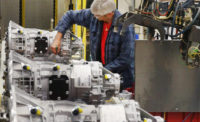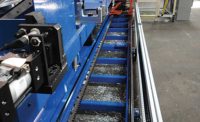During the early decades of the 20th century, Skoda Auto was a Czech automobile manufacturer with a few small plants (in Mlada Boleslav, Kvasiny and Vrchlabi) and a strong desire to meet the mobility needs of its citizens. But, that all changed after World War II.
Management decided to expand its presence in the European market, resulting in the Mlada Boleslav facility being reconstructed (by absorbing the other two plants), and Skoda redesigning and expanding its product line. By the late 1950s, Skoda had its sights on North America. This was achieved in late 1959 when the company’s Felicia, a compact four-cylinder convertible coupe, was imported into the United States.
Changes and market growth continued over the next four decades, resulting, eventually, in the company becoming a wholly owned subsidiary of the Volkswagen Group (VG) in 2000. Five years later, VG and the Chinese company SAIC began producing Skoda vehicles at jointly owned plants near Shanghai. VG also produces Skoda automobiles at plants in Kaluga, Russia (since 2008), and Pune, India (since 2011).
Back at the Mlada Boleslav plant, in early 2012 Skoda upgraded its rear- and front-axle assembly lines. The rear-axle line was extended to 60 meters, and several production processes were fully automated to increase production from 1,000 to 1,700 units per day.
As for the front-axle line, Skoda installed a TS 5 transfer system from the Bosch Rexroth Group to join several manual assembly processes with two automatic tightening stations. The line provides just-in-time assembly of 87 different models, each of which weighs 40 kilograms.
“Skoda wants to grow significantly in the coming years, [so] we are investing in new production technologies,” says Michael Oeljeklaus, board member for production and logistics at Skoda. “We are stepping on the gas in all areas of production and will consistently continue to improve. The new axle production facilities make an important contribution toward that.”
While researching transfer systems, managers of the front-axle line focused on several necessary capabilities. The system had to install easily and adapt to multiple production processes. It also had to ensure process reliability, allow the use of customized work pallets and require little maintenance.
The TS 5 consists of a powered roller conveyor and curves, which are self-contained units that let the system branch off to the right or left. It handles loads up to 300 kilograms, and can transport products either directly on the conveyor or a workpiece pallet. No additional drives are required for the curves.
Skoda likes that the system easily integrates with a slide unit in one of the tightening stations, and is robust enough to withstand harsh production environments. In addition, the system can be used in machining applications (unlike traditional roller chain conveyor systems) and is compatible with Bosch’s MGE mechanical elements used for building work tables, workstations, protective barriers and enclosures.
All parts of the system are modular, preassembled and can be combined as needed using a single interface. This design allows for easy expansion or reconfiguration. Bosch’s MTpro software quickens layout and automatically generates a parts list.
For more information on transfer systems, call 800-739-7684 or visit www.boschrexroth.com.




